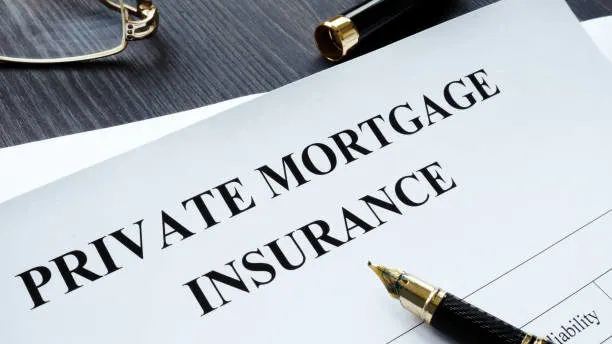Mortgage insurance is a financial safeguard for lenders, designed to protect them from the risk of borrower default. It’s a common requirement for homebuyers who make down payments smaller than 20% of the home’s purchase price. For many first-time homebuyers and those with limited financial resources, mortgage insurance is a crucial component of their home loan package. But a common question arises: Is mortgage insurance permanent, or can it be removed?
In this comprehensive article, we’ll explore what mortgage insurance is, how it works, the different types, and whether or not it is permanent. We’ll also discuss how and when borrowers may be able to remove mortgage insurance and the factors that influence the process.
What is Mortgage Insurance?
Mortgage insurance protects the lender in case the borrower defaults on the loan. It’s important to note that mortgage insurance is not for the benefit of the borrower but rather for the lender, reducing the lender’s risk of lending money to someone who might not have a large down payment or a high credit score.
Mortgage insurance can take different forms, depending on the type of loan:
- Private Mortgage Insurance (PMI): This is applicable to conventional loans where the borrower puts down less than 20% of the home’s value. PMI is typically required by lenders to offset the risk associated with low down payments.
- FHA Mortgage Insurance: For loans backed by the Federal Housing Administration (FHA), a type of mortgage insurance is required regardless of the down payment amount. FHA loans are popular with first-time homebuyers due to their lenient credit and down payment requirements.
- VA Loan and USDA Loan Guarantees: While these loans don’t require traditional mortgage insurance, they involve funding fees (VA loans) or guarantee fees (USDA loans) that serve a similar purpose by protecting the lender from borrower default.
Is Mortgage Insurance Permanent?
The permanence of mortgage insurance depends on the type of loan and the specific terms of the insurance policy. In some cases, mortgage insurance is temporary and can be removed, while in other cases, it may be permanent unless certain actions are taken.
1. Private Mortgage Insurance (PMI)
PMI is generally not permanent, but it depends on the loan terms and how quickly a borrower builds equity in their home. There are several ways PMI can be canceled:
- Automatic Cancellation: Under the Homeowners Protection Act (HPA) of 1998, lenders are required to automatically cancel PMI once the borrower’s loan-to-value (LTV) ratio reaches 78% (meaning the borrower has 22% equity in the home). This is based on the original purchase price or the appraised value of the home at the time the loan was issued, whichever is lower. The automatic cancellation occurs when the borrower is current on their mortgage payments.
- Borrower-Initiated Cancellation: A borrower can request PMI removal once their LTV reaches 80%. This request typically involves contacting the lender and providing evidence, such as a new home appraisal, that shows the home has appreciated in value or that enough principal has been paid off to meet the 80% LTV threshold.
- Refinancing: Another way to eliminate PMI is through refinancing the mortgage. If the home’s value has increased, a borrower may be able to refinance into a new loan without PMI because the LTV ratio will have dropped below 80%. Refinancing is often a viable option for homeowners in strong real estate markets where property values are rising.
- Prepayment: Homeowners can also make additional principal payments to accelerate the build-up of equity in their home, allowing them to reach the 80% LTV threshold sooner and request PMI cancellation.
In summary, PMI on conventional loans is usually not permanent. Borrowers who diligently make mortgage payments and increase their home’s equity can eliminate this cost over time.
2. FHA Mortgage Insurance
FHA loans require mortgage insurance, which can last for the life of the loan or be canceled after a certain period, depending on when the loan was originated and how much was put down. There are two types of FHA mortgage insurance:
- Upfront Mortgage Insurance Premium (UFMIP): This is a one-time payment made at closing, usually 1.75% of the loan amount. The UFMIP can be financed into the loan or paid upfront.
- Annual Mortgage Insurance Premium (MIP): This is an ongoing payment made as part of the borrower’s monthly mortgage payment. The amount depends on the loan amount, the loan term, and the LTV ratio.
When it comes to permanence, FHA mortgage insurance falls into two categories based on loan terms:
- FHA Loans with a Down Payment of Less than 10%: For loans with a down payment of less than 10%, the MIP is required for the entire life of the loan. Unless the borrower refinances into a conventional loan or sells the property, they will be paying MIP for as long as they have the FHA loan.
- FHA Loans with a Down Payment of 10% or More: For loans where the borrower made a down payment of 10% or more, the MIP is only required for the first 11 years. After this period, the mortgage insurance can be removed, assuming the borrower remains current on their payments.
FHA mortgage insurance can, therefore, be permanent or temporary, depending on the size of the down payment. Many borrowers with FHA loans choose to refinance into a conventional loan once they have built enough equity to avoid PMI.
3. VA Loans and USDA Loans
VA loans and USDA loans don’t require traditional mortgage insurance, but they do come with other fees that serve a similar function.
- VA Loans: These loans, available to eligible veterans, active service members, and certain military spouses, don’t require mortgage insurance. Instead, they require a one-time funding fee, which can vary depending on factors like the loan amount, the borrower’s military status, and whether it’s the borrower’s first VA loan. This fee can be financed into the loan, and in some cases, it can be waived for borrowers with service-related disabilities.
- USDA Loans: USDA loans, which are intended for low- to moderate-income homebuyers in rural areas, also don’t require traditional mortgage insurance. Instead, they come with a guarantee fee, which is similar to mortgage insurance in that it protects the lender in case of default. This fee includes an upfront payment and an annual fee, which is paid as part of the borrower’s monthly mortgage payment. Unlike FHA mortgage insurance, the USDA guarantee fee does not automatically cancel after reaching a specific LTV ratio. It lasts for the life of the loan unless the borrower refinances or pays off the loan.
The Cost of Mortgage Insurance
The cost of mortgage insurance varies depending on factors like the size of the down payment, the loan amount, the type of loan, and the borrower’s credit score. Generally, PMI costs between 0.3% and 1.5% of the original loan amount annually. FHA mortgage insurance premiums are typically higher, ranging from 0.45% to 1.05%, depending on the LTV ratio and loan term.
For borrowers with PMI, making extra payments to reduce the principal or refinancing into a loan without PMI can help reduce overall costs.
How to Remove Mortgage Insurance
Removing mortgage insurance can result in significant savings over the life of the loan. The steps to remove mortgage insurance depend on the type of loan:
- PMI: Borrowers with conventional loans should monitor their LTV ratio and request cancellation once they reach 80% LTV. It’s important to stay current on mortgage payments and maintain a good payment history, as lenders will typically require this before approving PMI cancellation.
- FHA Loans: Borrowers with FHA loans can refinance into a conventional loan once they’ve built enough equity to avoid PMI. Alternatively, if they made a down payment of 10% or more, they can stop paying MIP after 11 years.
- USDA and VA Loans: Since these loans don’t require traditional mortgage insurance, borrowers won’t need to cancel PMI or MIP. However, refinancing may still be beneficial if interest rates drop or if a borrower wishes to switch to a different loan type.
Conclusion
Mortgage insurance is a common requirement for borrowers who make smaller down payments, but it’s not always permanent. For conventional loans with PMI, borrowers can remove it once they reach 20% equity in their home. FHA loans are more complex, with mortgage insurance lasting either 11 years or for the life of the loan, depending on the size of the down payment. VA and USDA loans have no traditional mortgage insurance, though they do require other fees that function similarly.
Understanding when and how mortgage insurance can be removed is critical for homeowners looking to reduce their monthly payments and overall loan costs. By building equity and staying current on payments, many borrowers can eliminate this additional expense and improve their financial situation.

